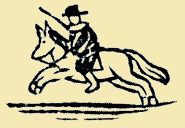- Yes!
- Group Sculptures
- Mirrors
- Sculpture Gallery
- Presents
- Have You Seen My Kitty?
- Magic Hat
- Hotseat, or, The Press Conference
- “I’ll follow you!”: A choral speech
- Three Worlds
- Two-character exchanges
- “Now I am alone”: The soliloquy
- Group voice: Sharing a character
- Showdown: Oberon vs. Titania
- Planning the Project: What do you want your students to achieve?
- Planning the Project: Making room for Shakespeare
- Planning the Project: The Final Performance
- A sample sequence
- Laying the foundation, establishing some rituals
- Preparing for the journey: A checklist
- We shall not cease from exploration

Materials needed:
Open space, room to run if possible Time needed:
5-10 minutes Students participating:
everyone at once, teacher too! This is a classic Winedale improvisation ice-breaker, and also gets at a very fundamental concept behind our work. We learned it from Dr. Ayres, who always pointed out the importance of “Yes!” as a statement of belief at Winedale: the students who say “Yes!” to whatever comes their way out there, whether it is a particular role, a certain task, or a brand-new experience, always bring new energy and life to the group. In this game, you must find a large, open space. Take students outside or, if you have access and it’s not being used, to the gym or auditorium. Make sure it’s someplace the kids will not feel observed by others. You can do a restrained version of this in your classroom if need be, with everyone agreeing not to run or bump. Here’s how to play:
- The first person to lead shouts out a suggestion for an imaginary transformation, beginning with the words, “Let’s all be….” So here’s an example: “Let’s all be radio-controlled airplanes!” Whatever it is she says – whether it’s that, or “polar bears,” or “penguins,” or “rodeo clowns being chased by bulls” – everyone has to instantly shout out in unison, “YES!” and become that thing or activity with full energy.
- Once everyone has been the first thing for a good 10 seconds – and it’s best if you can do this with the kids, while watching to make sure no one’s running wild, or copping out by just laughing at others, or not saying “Yes!” – someone, anyone, shouts out a new one: “Let’s all be raindrops!” “YES!” and boom, everyone is a raindrop.
- The game continues like this, with players spontaneously shouting out new suggestions. Some will be attempts to control the game, such as, “Let’s all sit here and do nothing!” If you need to you can stop and explain that the game works best with active choices.
- The key is to seek a spirit of rollicking energy tempered by the ability to immediately stop and change on a dime. So if kids get out of control as one “thing,” and don’t immediately transform when the next person shouts out an idea, they are not fulfilling the spirit of the game.
- The game is a success when everyone is enjoying it together, and when everyone at some point shouts out a suggestion. We usually don’t require that everyone say something, at first – it’s better to let it be spontaneous. But if a few people are dominating the transformations, you can stop and discuss the need to hold back and let others have a shot at it.
- Stop the game after 5-10 minutes, after it’s gone well for at least a few minutes with full participation. Have an agreed-upon stopping signal – a whistle, a clap, a call-and-response routine, etc.
- If you are encountering resistance with some kids, nudge them along with a sense of humor. If they still resist, you might even stop the game and have a quick discussion: Why do we sometimes freeze up in these games? What are we afraid of? It can be very interesting to get kids to speak about this. Such a discussion can get at some of the very issues you’ll be tackling with a Shakespeare project – the fear of “looking dumb” in front of others. We sometimes emphasize the power that comes from fearlessness, in the hopes that the resistant kids will see that they actually appear stronger, not weaker, when they are unafraid to play and have fun. It can take a while. But a group that can play this game whole-heartedly is already halfway to what it takes to play Shakespeare!
- Return to this game when you can for short, energizing. loosening-up bursts. If you link it with going outside, it might be a special “reward” activity – and thus become more desirable to the resistant kids, who might finally join in.
